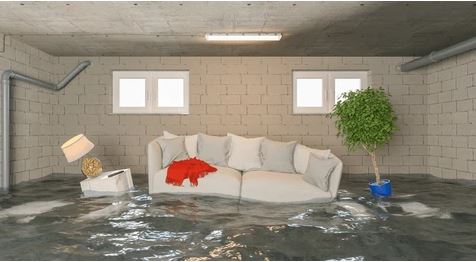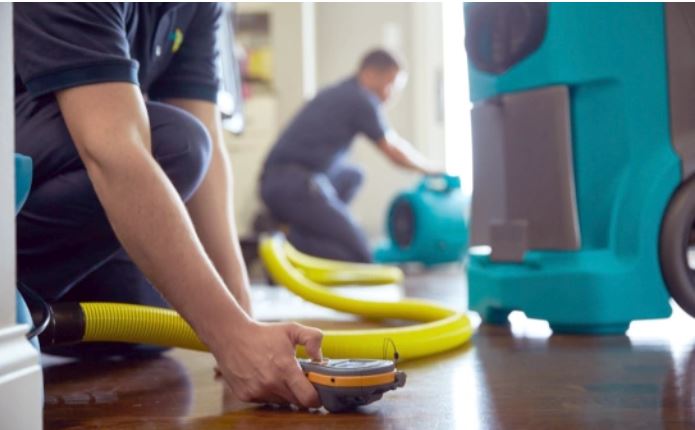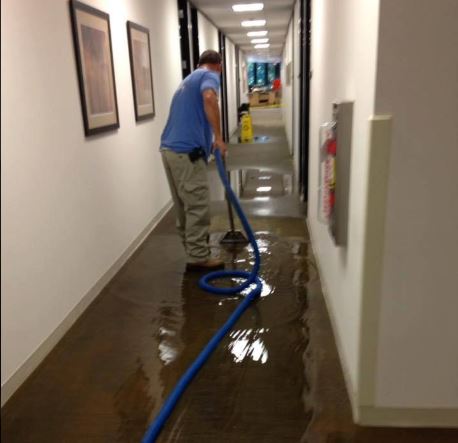What to Do After Water Damage: 7 Critical Steps San Antonio Homeowners Must Take
Table of Contents
Brief Summary
When water damage strikes your San Antonio home, knowing what to do after water damage occurs can mean the difference between minor repairs and devastating losses. This comprehensive guide covers the 7 critical steps every homeowner must take immediately following water damage, from ensuring safety and stopping the water source to documenting damage and working with restoration professionals. Prime Time’s expert restoration team shares insider knowledge on emergency response, insurance claims, and preventing secondary damage like mold growth in Texas’s humid climate.

Water damage emergencies don’t wait for convenient times. Whether it’s a burst pipe at 2 AM, storm flooding during Texas’s intense weather seasons, or a malfunctioning appliance, knowing exactly what to do after water damage can save you thousands of dollars and prevent long-term structural issues that plague many San Antonio homes.
As Texas’s leading water damage restoration specialists serving San Antonio and surrounding areas for over a decade, Prime Time has responded to thousands of water emergencies. We’ve seen how quick, informed action can transform a potential disaster into a manageable restoration project, while delayed or improper responses can lead to devastating consequences including structural damage, mold growth, and complete property loss.
Ensure Safety First: Your Family’s Wellbeing Comes Before Everything
The first thing you must do after water damage is ensure everyone’s safety. Water and electricity create deadly combinations, and contaminated water poses serious health risks that many San Antonio homeowners underestimate.
Immediate Safety Steps:
Turn off electricity at the main breaker if water has reached electrical outlets, appliances, or the electrical panel. Never enter standing water if electrical components might be energized. In San Antonio’s older neighborhoods like King William and Southtown, outdated electrical systems pose particular risks during flooding events.
Check for structural damage before entering affected areas. Look for sagging ceilings, warped floors, or cracked walls that could indicate compromised structural integrity. Texas’s clay soil expands and contracts dramatically, making foundations particularly vulnerable to water damage.
Identify water contamination levels immediately. Clean water from supply lines requires different handling than greywater from appliances or blackwater from sewage backups. San Antonio’s aging infrastructure increases the likelihood of sewage contamination during flooding events.
Health Protection Measures:
Wear protective equipment including waterproof boots, gloves, and N95 masks when entering damaged areas. San Antonio’s humid climate accelerates bacterial growth in standing water, making protection essential within hours of initial damage.
Evacuate if necessary, especially if sewage contamination is suspected or if structural integrity is compromised. Don’t risk your family’s safety for property that can be replaced or restored.
Stop the Water Source Immediately
Stopping ongoing water intrusion is critical to preventing escalating damage. Every minute water continues entering your San Antonio home increases restoration costs exponentially and raises the likelihood of secondary damage.
Common Water Sources and Solutions:
Burst Pipes: Turn off water at the main shutoff valve, typically located near the street or where the main line enters your home. In San Antonio’s older neighborhoods, these valves may be difficult to locate or operate due to age and sediment buildup.
Appliance Failures: Disconnect power and water supply to malfunctioning washing machines, dishwashers, water heaters, or HVAC systems. San Antonio’s hard water accelerates appliance deterioration, making sudden failures common.
Roof Leaks: Place containers to catch dripping water and cover damaged areas with tarps if safely accessible. Texas’s severe weather events, including hail and high winds, frequently compromise roofing systems throughout the San Antonio area.
Plumbing Backups: Stop using all water fixtures and contact a plumber immediately. San Antonio’s municipal system experiences periodic backup issues, particularly during heavy rainfall events.
Follow Prime Time on Instagram, Facebook, Yelp, Pinterest, for frequent insights, and YouTube to get updates on important topics around water damage restoration.

Emergency Repairs:
Make temporary repairs to prevent additional water entry, but prioritize safety over property protection. Use plastic sheeting, towels, or containers to redirect water away from sensitive areas like electrical panels, hardwood floors, and furnishings.
Document any emergency repairs for insurance purposes, including photographs and receipts for materials purchased. Insurance companies require detailed documentation for reimbursement claims.
Document Everything for Insurance Claims
Thorough documentation forms the foundation of successful insurance claims and ensures you receive fair compensation for water damage restoration. San Antonio’s competitive insurance market means detailed documentation can significantly impact claim outcomes.
Photography and Video Requirements:
Take comprehensive photos and videos of all damaged areas before beginning cleanup or restoration activities. Capture wide shots showing the extent of damage and close-ups highlighting specific items and structural damage.
Document water levels using measuring tape or rulers placed against walls, furniture, or other reference points. Insurance adjusters use this information to determine coverage levels and restoration scope.
Photograph undamaged areas adjacent to water damage to establish contrast and demonstrate the extent of contamination or damage spread. This documentation proves particularly valuable when dealing with hidden damage behind walls or under flooring.

Written Documentation:
Create detailed written inventories of damaged personal property, including purchase dates, original costs, and current condition. San Antonio’s diverse housing market means property values vary significantly, making accurate documentation essential.
Record timeline information including when damage was discovered, when water source was stopped, and when cleanup began. Insurance companies scrutinize timelines to determine policy coverage and prevent fraudulent claims.
Professional Assessment:
Contact your insurance company immediately to report the claim and request adjuster assignment. Many San Antonio insurers offer 24/7 claim reporting and emergency services coordination.
Consider hiring a public adjuster if damage is extensive or if you’re unfamiliar with insurance claim processes. Public adjusters advocate for policyholders and often secure higher settlement amounts than homeowners achieve independently.
Remove Standing Water Quickly
Standing water causes exponential damage the longer it remains in your San Antonio home. Texas’s humidity and heat create ideal conditions for mold growth, which can begin within 24-48 hours of initial water exposure.
Water Removal Methods:
Professional Extraction: Contact Prime Time’s emergency water extraction services for rapid, comprehensive water removal using industrial-grade equipment. Our 90-minute response time ensures minimal damage escalation throughout San Antonio and surrounding areas including Boerne, New Braunfels, and Austin.
DIY Removal for Minor Incidents: Use wet/dry vacuums, mops, and towels for small-scale water removal, but understand that household equipment cannot achieve the thoroughness required for comprehensive restoration. Subfloor moisture often remains undetected without professional moisture meters.
Pump Rental: For extensive flooding, rent submersible pumps capable of handling large water volumes quickly. San Antonio equipment rental companies stock emergency restoration equipment, but availability becomes limited during major weather events.

Moisture Detection and Monitoring:
Professional restoration companies use thermal imaging cameras and moisture meters to detect hidden water in walls, flooring, and structural components. DIY approaches cannot identify these hidden moisture pockets, leading to mold growth and structural deterioration.
Establish moisture monitoring protocols to track drying progress and ensure complete moisture removal. Inadequate drying is the primary cause of secondary damage in San Antonio’s humid climate.
Protect Your Belongings and Start Salvage Operations
Protecting salvageable belongings while prioritizing health and safety requires strategic planning and quick action. San Antonio’s climate accelerates deterioration, making immediate action essential for successful salvage operations.
Immediate Salvage Priorities:
Electronics and Documents: Remove and relocate important documents, electronics, and irreplaceable items to dry areas immediately. San Antonio’s humidity can destroy paper documents and electronic components within hours of exposure.
Furniture and Textiles: Move furniture to unaffected areas or elevate on blocks to prevent additional absorption. Upholstered furniture requires professional assessment to determine salvageability, particularly if contaminated water was involved.
Clothing and Personal Items: Sort clothing and personal items into salvageable and non-salvageable categories based on contamination levels and material types. Dry cleaning and specialized restoration services can often save items that appear beyond recovery.
Professional Restoration Services:
Consider professional content restoration services for valuable items including artwork, antiques, and electronics. Prime Time partners with specialized content restoration companies serving San Antonio to provide comprehensive recovery services.
Storage Solutions:
Arrange temporary storage for salvaged items while restoration proceeds. Climate-controlled storage protects items from San Antonio’s humidity and temperature fluctuations during the restoration process.
Contact Professional Water Damage Restoration Services
Professional water damage restoration services provide expertise, equipment, and experience that DIY approaches cannot match. Choosing the right restoration company significantly impacts both restoration outcomes and insurance claim success.
Selecting Restoration Professionals:
Certification and Licensing: Verify restoration companies hold appropriate certifications including IICRC (Institute of Inspection, Cleaning and Restoration Certification) credentials and Texas state licensing. Prime Time maintains comprehensive certifications and licensing throughout our service areas including San Antonio, Austin, Houston, and Dallas.
Insurance Relationships: Choose restoration companies with established insurance relationships and direct billing capabilities. This streamlines the claims process and reduces out-of-pocket expenses during restoration.
Response Time: Emergency response time directly correlates with restoration success and cost control. Prime Time’s 90-minute response time throughout San Antonio and surrounding areas ensures minimal damage escalation.

Services and Capabilities:
Comprehensive Restoration: Select companies offering complete restoration services including water extraction, structural drying, mold remediation, and reconstruction services. Prime Time provides end-to-end restoration solutions eliminating coordination challenges between multiple contractors.
Advanced Equipment: Professional restoration requires specialized equipment including industrial dehumidifiers, air movers, thermal imaging cameras, and moisture detection equipment. This equipment level exceeds typical rental availability and requires trained operators for effective use.
Emergency Services: Ensure restoration companies provide 24/7 emergency services with guaranteed response times. Water damage emergencies don’t follow business hours, and delayed response increases damage severity exponentially.
Begin the Recovery and Restoration Process
The restoration process involves multiple phases requiring coordination between restoration professionals, insurance adjusters, and homeowners. Understanding this process helps San Antonio homeowners make informed decisions and maintain realistic expectations.
Phase 1: Assessment and Planning
Professional restoration begins with comprehensive damage assessment using advanced detection equipment to identify all affected areas including hidden moisture. This assessment determines restoration scope, timeline, and budget requirements.
Restoration professionals develop detailed restoration plans addressing immediate stabilization needs, long-term restoration requirements, and reconstruction scope. These plans provide roadmaps for insurance adjusters and help homeowners understand the restoration process.
Phase 2: Water Extraction and Structural Drying
Industrial-grade water extraction removes standing water and surface moisture quickly and thoroughly. Professional extraction achieves moisture removal levels impossible with household equipment.
Structural drying utilizes scientific drying principles including heat, airflow, and dehumidification to remove moisture from building materials. This process typically requires 3-5 days but varies based on materials, construction methods, and environmental conditions.
Phase 3: Cleaning and Sanitization
Professional cleaning addresses contamination concerns and prepares surfaces for restoration. This includes antimicrobial treatments to prevent mold growth and odor control measures.
Content cleaning and restoration processes address personal belongings using specialized techniques for different materials and contamination levels.
Phase 4: Restoration and Reconstruction
Restoration work ranges from minor repairs like drywall replacement to major reconstruction including flooring, cabinetry, and structural components. Prime Time’s reconstruction services eliminate coordination challenges and ensure consistent quality throughout the project.
Final inspections ensure restoration meets industry standards and local building codes. This includes moisture testing to verify complete drying and air quality testing when mold concerns exist.
Preventing Future Water Damage Incidents
Learning from water damage incidents helps prevent future occurrences and reduces restoration costs over time. San Antonio’s climate and geography create specific risk factors that homeowners can address proactively.
Maintenance and Prevention Strategies:
Plumbing System Maintenance: Schedule annual plumbing inspections and address minor issues before they become major problems. San Antonio’s hard water and aging infrastructure accelerate plumbing system deterioration.
Appliance Monitoring: Replace appliance supply lines every 5-7 years and install water leak detection devices near high-risk appliances including water heaters, washing machines, and dishwashers.
Roof and Gutter Maintenance: Maintain roofing systems through regular inspections and prompt repairs. Clean gutters and downspouts regularly to ensure proper drainage during Texas’s intense rainfall events.

Technology Solutions:
Install whole-home water leak detection systems that automatically shut off water supply when leaks are detected. These systems provide early warning and automatic protection when homeowners are away.
Consider smart home monitoring systems that alert homeowners to temperature, humidity, and moisture changes that could indicate developing problems.
Conclusion
Knowing what to do after water damage strikes your San Antonio home empowers you to respond effectively and minimize both immediate damage and long-term consequences. From ensuring safety and stopping water sources to documenting damage and coordinating professional restoration, each step plays a critical role in successful recovery.
Prime Time’s experienced restoration professionals stand ready to guide San Antonio homeowners through every phase of water damage recovery. Our 90-minute response time, comprehensive restoration services, and insurance expertise ensure your home returns to pre-damage condition quickly and efficiently.
Don’t let water damage overwhelm you, contact Prime Time immediately when disaster strikes. Our 24/7 emergency services and experienced team transform water damage emergencies into manageable restoration projects, protecting your family’s most important investment.
Ready to protect your San Antonio home from water damage? Contact Prime Time today at (210) 656-3469 or visit our testimonials page to see how we’ve helped hundreds of families recover from water damage disasters.
Contact Information:

Prime Time Restoration Address:11495 Topperwein Road San Antonio, TX 78233
Service Areas: Austin, Boerne, Buda, Canyon Lake, Cibolo, Converse, Dallas, Fair Oaks Ranch, Hondo, Houston, Kyle, Live Oak, Leon Valley, New Braunfels, San Antonio, San Marcos, Schertz, Seguin, Selma, Spring Branch, Timberwood Park, Universal City
Specialized Services: Water and Flood Restoration, Environmental Hazard Remediation, Fire Damage Remediation, 24/7 Emergency Services, Insurance Assistance, Commercial Mold Remediation, Storm and Fire Damage Restoration Services, Reconstruction Services
Service Areas: Austin, Boerne, Buda, Canyon Lake, Cibolo, Converse, Dallas, Fair Oaks Ranch, Hondo, Houston, Kyle, Live Oak, Leon Valley, New Braunfels, San Antonio, San Marcos, Schertz, Seguin, Selma, Spring Branch, Timberwood Park, Universal City
Specialized Services: Water and Flood Restoration, Environmental Hazard Remediation, Fire Damage Remediation, 24/7 Emergency Services, Insurance Assistance, Commercial Mold Remediation, Storm and Fire Damage Restoration Services, Reconstruction Services


